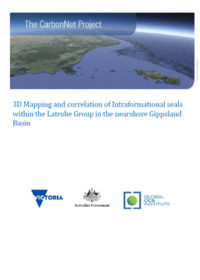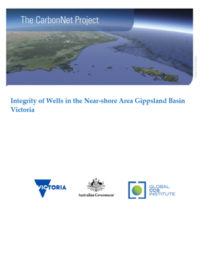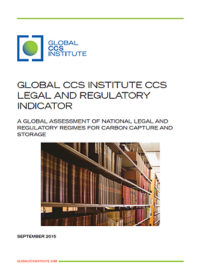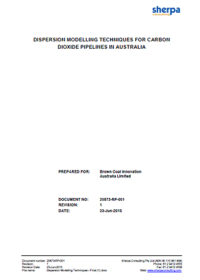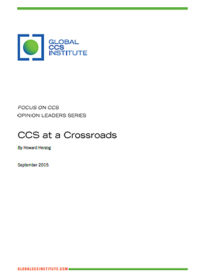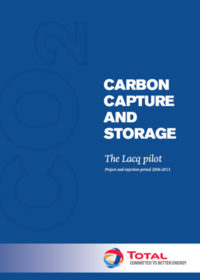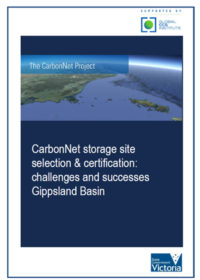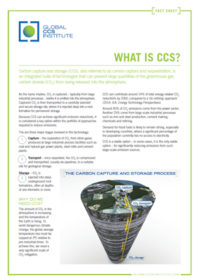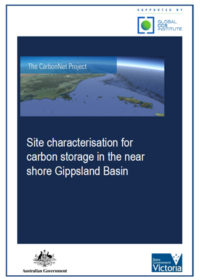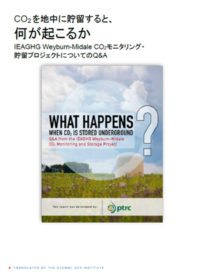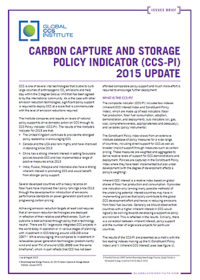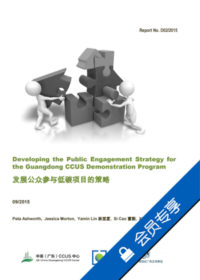Resources
Publications
Our publications, reports and research library hosts over 500 specialist reports and research papers on all topics associated with CCS.
View our Publication Library Disclaimer.
Filter by
The CarbonNet Project: 3D mapping and correlation of intraformational seals within the Latrobe Group in the nearshore Gippsland Basin
15th October 2015
Topic(s): Carbon capture use and storage (CCUS), CO2 storage
The Global CCS Institute presents the sixth report published by the CarbonNet Project, located in Victoria, Australia, this report has focussed on a critical aspect of CO2 storage - containment of the CO2. CarbonNet are investigating the potential for establishing a large scale, multi user CCS network bringing together multiple CO2 capture projects, transporting CO2 via a shared pipeline and injecting it deep into an underground, offshore storage site and is currently in feasibility and commercial definition stage.
The Gippsland Basin is known to have a world-class proven regional seal (or caprocks), known as the Lakes Entrance Formation it has stored oil and gas accumulations for tens of millions of years. This regional seal has always been identified as the final barrier to CO2 plume migration in any storage concept in the basin. This report has identified several additional, laterally extensive seals below the regional seal, known as the T2 seal. These additional sealing units are expected to provide an effective barrier to the CO2 injected into the primary storage targets below in the Halibut reservoirs. The T2 seals are proven to be effective containment rocks as they have previously retained oil and gas accumulations locally and nearby. Also, lab measurements on rock samples of the seal suggest they could hold back a column of CO2 in excess of what is expected to be required in the reservoirs below. This investigation has revealed there may be hundreds of gigatonnes of additional storage available and confirms that the Gippsland Basin is a world class storage site for CCS.
This report is authored by N. Hoffman , T. Evans, N. Arian, The CarbonNet Project, Melbourne, Australia; Guy Holdgate, University of Melbourne. Chris Consoli, Institute Senior Adviser for Storage, Asia-Pacific also provides an overview of the report in an Insight available on the Global CCS Institute website.
Disclaimer
The content within the Global CCS Institute Publications, Reports and Research Library is provided for information purposes only. We make every effort and take reasonable care to keep the content of this section up-to-date and error-free. However, we make no claim as to its accuracy, currency or reliability.
Content and material featured within this section of our website includes reports and research published by third parties. The content and material may include opinions and recommendations of third parties that do not reflect those held by the Global CCS Institute.
The CarbonNet Project: integrity of wells in the near-shore area Gippsland Basin Victoria
14th October 2015
Topic(s): Carbon capture use and storage (CCUS), CO2 storage
The Global CCS Institute presents this new report by CarbonNet evaluating the impact legacy petroleum wells may have on their search for CO2 storage sites in the nearshore Gippsland Basin. The CarbonNet Project is investigating the potential to establish a CCS Hub bringing together multiple CO2 capture projects in Victoria’s Latrobe Valley, transporting CO2 via a shared pipeline and injecting it into deep saline formations in the nearshore Gippsland Basin.
This report identified and then analysed legacy petroleum wells that may have an impact on the feasibility of CO2 storage sites targeted as future storage concepts. The analysis included using data lodged with the regulatory authority to assess how the legacy petroleum wells were ‘completed’. The investigation found that none of the wells have any significant risk of leakage and that there is negligible risk of CO2 rising to near-surface levels.
This report is authored by Todd Goebel, Nick Hoffman, Barry Nicholson, and The CarbonNet Project. Chris Consoli, Institute Senior Adviser for Storage, Asia-Pacific also provides an overview of the report in a new Insight available on the Global CCS Institute website.
Disclaimer
The content within the Global CCS Institute Publications, Reports and Research Library is provided for information purposes only. We make every effort and take reasonable care to keep the content of this section up-to-date and error-free. However, we make no claim as to its accuracy, currency or reliability.
Content and material featured within this section of our website includes reports and research published by third parties. The content and material may include opinions and recommendations of third parties that do not reflect those held by the Global CCS Institute.
Global CCS Institute CCS legal and regulatory indicator
29th September 2015
Topic(s): Carbon capture use and storage (CCUS), Policy law and regulation
The Institute’s CCS Legal and Regulatory Indicator represents a detailed examination and assessment of 55 countries’ legal and regulatory frameworks for the technology. The Indicator considers a broad range of legal and regulatory factors, which are likely to be critical to the regulation of CCS, and it is hoped that it will prove a valuable model for tracking progress and opportunities for the development of legal frameworks worldwide.
Disclaimer
The content within the Global CCS Institute Publications, Reports and Research Library is provided for information purposes only. We make every effort and take reasonable care to keep the content of this section up-to-date and error-free. However, we make no claim as to its accuracy, currency or reliability.
Content and material featured within this section of our website includes reports and research published by third parties. The content and material may include opinions and recommendations of third parties that do not reflect those held by the Global CCS Institute.
Dispersion modelling techniques for carbon dioxide pipelines in Australia
23rd September 2015
Topic(s): Carbon capture use and storage (CCUS), CO2 transport
The Global CCS Institute presents the first detailed report on CO2 pipeline design for Australia. This comprehensive investigation provides a critical review of current Australian and global pipeline design standards for CO2 transport. The report provides insight into the current Australian Standards for Pipeline Design, AS2885 and undertaking fit-for-purpose dispersion modeling for CO2 detailing a set of guidelines and best practice recommendations.
The report was prepared for Brown Coal Innovation by Sherpa Consulting and funded by the Australian National Low Emissions Coal Research and Development Ltd (ANLEC R&D) and the Department of Economic Development, Jobs, Transport, and Resources of the State of Victoria, administered through Brown Coal Innovation Australia Limited and is part of the series of reports focussing on CCS in Victoria.
Chris Consoli, Institute Senior Adviser for Storage, Asia-Pacific also provides an overview of the report in an Insight available on the Global CCS Institute website.
This report is republished with the permission of The CarbonNet Project. It was funded in part by a contribution by the Global CCS Institute, commissioned within the scope of The CarbonNet Project and in line with The Institute's mission to accelerate the development, demonstration and deployment of carbon capture and storage globally. The views expressed within the report are those of the authors and not necessarily of the Global CCS Institute.
Disclaimer
The content within the Global CCS Institute Publications, Reports and Research Library is provided for information purposes only. We make every effort and take reasonable care to keep the content of this section up-to-date and error-free. However, we make no claim as to its accuracy, currency or reliability.
Content and material featured within this section of our website includes reports and research published by third parties. The content and material may include opinions and recommendations of third parties that do not reflect those held by the Global CCS Institute.
CCS at a crossroads
23rd September 2015
Topic(s): Carbon capture use and storage (CCUS), Economics, Policy law and regulation
Howard Herzog's article, CCS at a crossroads, is part of an opinion leader’s article series for Focus on CCS. The series features contributions from world leading authorities on carbon capture and storage (CCS), presenting their perspectives on the role for the technology in reducing our carbon dioxide emissions. The series is published by the Global CCS Institute to contribute to the conversation about CCS within the portfolio of options to help tackle climate change.
Howard J. Herzog is a Senior Research Engineer in the MIT Energy Initiative.
Disclaimer
The content within the Global CCS Institute Publications, Reports and Research Library is provided for information purposes only. We make every effort and take reasonable care to keep the content of this section up-to-date and error-free. However, we make no claim as to its accuracy, currency or reliability.
Content and material featured within this section of our website includes reports and research published by third parties. The content and material may include opinions and recommendations of third parties that do not reflect those held by the Global CCS Institute.
Carbon capture and storage: the Lacq pilot. Project and injection period 2006-2013
15th September 2015
Topic(s): Carbon capture use and storage (CCUS), Engineering and project delivery
This publication describes Total’s Lacq CCS pilot demonstration project. The pilot project entailed the conversion of an existing air-fired boiler to a 30 MWth oxy-combustion boiler that produced a flue gas with a high CO2 content. The project’s aim was to test the complete chain of capture, transport and storage of purified and compressed CO2, integrated within the infrastructure of the Lacq industrial platform.
The publication includes technical and geological content, environmental impact and risk assessments, monitoring and surveillance data, and a discussion on community outreach. It provides insights for those involved in developing CCS in the future.
Disclaimer
The content within the Global CCS Institute Publications, Reports and Research Library is provided for information purposes only. We make every effort and take reasonable care to keep the content of this section up-to-date and error-free. However, we make no claim as to its accuracy, currency or reliability.
Content and material featured within this section of our website includes reports and research published by third parties. The content and material may include opinions and recommendations of third parties that do not reflect those held by the Global CCS Institute.
The CarbonNet Project. CarbonNet storage site selection & certification: challenges and successes
14th September 2015
Topic(s): Carbon capture use and storage (CCUS), CO2 hubs, CO2 storage
The Global CCS Institute presents the second report by CarbonNet to identify and then characterise suitable storage sites in the offshore Gippsland Basin. The CarbonNet Project is investigating the potential to establish a CCS Hub bringing together multiple CO2 capture projects in Victoria’s Latrobe Valley, transporting CO2 via a shared pipeline and injecting it into the offshore Gippsland Basin.
This report details the history of the site selection process between 2010 and 2015. The search for a storage site has followed international best practice, aligned to DNV GL Recommended Practice (DNV-RP-J203) to provide decision makers and stakeholders with independent expert assurance of environmentally safe, long-term geological storage.
This report is authored by George Carman, Nick Hoffman, and the CarbonNet Project. Chris Consoli, Institute Senior Adviser for Storage, Asia-Pacific also provides an overview of the report in an Insight available on the Global CCS Institute website.
Disclaimer
The content within the Global CCS Institute Publications, Reports and Research Library is provided for information purposes only. We make every effort and take reasonable care to keep the content of this section up-to-date and error-free. However, we make no claim as to its accuracy, currency or reliability.
Content and material featured within this section of our website includes reports and research published by third parties. The content and material may include opinions and recommendations of third parties that do not reflect those held by the Global CCS Institute.
The Global CCS Institute explains that CCS - carbon capture and storage - is a suite of technologies that prevents carbon dioxide emissions from entering the atmosphere.
Disclaimer
The content within the Global CCS Institute Publications, Reports and Research Library is provided for information purposes only. We make every effort and take reasonable care to keep the content of this section up-to-date and error-free. However, we make no claim as to its accuracy, currency or reliability.
Content and material featured within this section of our website includes reports and research published by third parties. The content and material may include opinions and recommendations of third parties that do not reflect those held by the Global CCS Institute.
The CarbonNet Project: site characterisation for carbon storage in the near shore Gippsland Basin
7th September 2015
Topic(s): Carbon capture use and storage (CCUS), CO2 storage
The Global CCS Institute presents a carbon dioxide (CO2) storage site characterisation study for the CarbonNet Project. The CarbonNet project is investigating the potential to establish a CCS Hub bringing together multiple CO2 capture projects in Victoria’s Latrobe Valley, transporting CO2 via a shared pipeline and injecting it into the offshore Gippsland Basin. The report details the steps taken during the screening of potential storage sites in the offshore Gippsland Basin.
Three of the highest ranked sites are identified and their geological characteristics detailed and suitability for CO2 storage are described. The report found that all three storage sites are located nearshore and have the potential to dispose of between 25 and 15 Mt of CO2 permanently in deep saline formations.
This report is authored by Nick Hoffman, George Carman, Mohammad Bagheri, Todd Goebel; and the CarbonNet Project for the Global CCS Institute. Chris Consoli, Institute Senior Adviser for Storage, Asia-Pacific also provides an overview of the report in a new Insight available on the Global CCS Institute website.
Disclaimer
The content within the Global CCS Institute Publications, Reports and Research Library is provided for information purposes only. We make every effort and take reasonable care to keep the content of this section up-to-date and error-free. However, we make no claim as to its accuracy, currency or reliability.
Content and material featured within this section of our website includes reports and research published by third parties. The content and material may include opinions and recommendations of third parties that do not reflect those held by the Global CCS Institute.
CO2を地中に貯留すると、何が起こるか – IEAGHG Weyburn-Midale CO2モニタリング・貯留プロジェクトについてのQ&A
4th September 2015
Topic(s): Carbon capture use and storage (CCUS), CO2 storage, Health safety and environment
IEAGHG Weyburn-Midale CO2モニタリング・貯留プロジェクトは、カナダ・サスカチェワン州南東の石油埋蔵地貯留所へのCO2圧入および貯留効果を調査するために設計された研究プログラムである。「CO2を地中に貯留すると、何が起こるか」は、CCSについて一般市民から頻繁に寄せられる質問に対し、上記プロジェクトから得られた広範囲に及ぶデータおよび調査結果に基づく回答をまとめたものである。
Japanese translation of What happens when CO2 is stored underground? Q&A from the IEAGHG Weyburn-Midale CO2 Monitoring and Storage Project.
Disclaimer
The content within the Global CCS Institute Publications, Reports and Research Library is provided for information purposes only. We make every effort and take reasonable care to keep the content of this section up-to-date and error-free. However, we make no claim as to its accuracy, currency or reliability.
Content and material featured within this section of our website includes reports and research published by third parties. The content and material may include opinions and recommendations of third parties that do not reflect those held by the Global CCS Institute.
Carbon Capture and Storage Policy Indicator (CCS-PI): 2015 update
2nd September 2015
Topic(s): Carbon capture use and storage (CCUS), Carbon markets, Domestic policy, Economics, Policy law and regulation
The Institute has developed an analytical framework to derive a composite indicator that compares levels of national policy support to drive domestic action on CCS.
This 2015 update of the CCS Policy Indicator includes some important developments that have occurred in several major countries since it was last published in 2013.
Disclaimer
The content within the Global CCS Institute Publications, Reports and Research Library is provided for information purposes only. We make every effort and take reasonable care to keep the content of this section up-to-date and error-free. However, we make no claim as to its accuracy, currency or reliability.
Content and material featured within this section of our website includes reports and research published by third parties. The content and material may include opinions and recommendations of third parties that do not reflect those held by the Global CCS Institute.
全球碳捕集与封存研究院和中英(广东)CCUS中心授权该报告介绍了由华润电力(海丰)和中国海洋石油总公司(中海油)一体化碳捕集与封存示范项目(CRP Power Project)实施的项目公众参与战略开发的过程。
此次行动在中国属于首例且是一个持续的过程。到目前为止,CCS公众参与项目案例研究的主要工作是,分析了欧洲、北美和澳大利亚既有的活动。下一步的重点就是仔细考虑目前的最佳实践如何在其他区域环境中得到应用。从CRP Power Project中所学到的经验教训可能对于中国其他考虑公众参与战略发展的CCS项目支持者们很有用。
该报告经由Peta Ashworth(Ash Research)、Jessica Morton(全球碳捕集与封存研究院)、林亚茗和曹斯(南方新闻)和梁希(中英(广东)CCUS中心)授权。授权者们希望感谢林千果(全球碳捕集与封存研究院)和David Reiner博士(剑桥大学贾吉商学院)对本报告的战略性建议和投入。
Jessica Morton,研究院亚太区公众参与高级顾问写了一份观点,对本报告进行了综述并介绍了亚太区近期其他的CCS公众参与活动。
Disclaimer
The content within the Global CCS Institute Publications, Reports and Research Library is provided for information purposes only. We make every effort and take reasonable care to keep the content of this section up-to-date and error-free. However, we make no claim as to its accuracy, currency or reliability.
Content and material featured within this section of our website includes reports and research published by third parties. The content and material may include opinions and recommendations of third parties that do not reflect those held by the Global CCS Institute.
